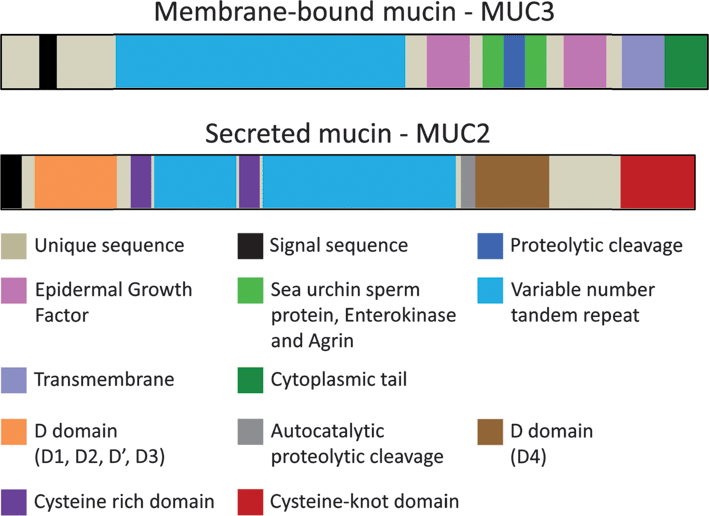 In this Food & Function review article, Adrian Cookson and co-workers from New Zealand look at how the mucus layer covering the gastrointestinal tract is influenced by intestinal bacteria and dietary components.
In this Food & Function review article, Adrian Cookson and co-workers from New Zealand look at how the mucus layer covering the gastrointestinal tract is influenced by intestinal bacteria and dietary components.
The large bowel provides the ideal environment for the growth of many genera of bacteria, in particular, bifidobacteria and lactobacilli. The complex bacterial community can be altered by introducing fermentable dietary components such as starch, non-starch polysaccharides, and non-digestible oligosaccharides, selectively stimulating the growth of specific strains of bifidobacteria. These dietary components can change the metabolic end products of bacterial fermentation, which in turn are able to modify the expression of mucin genes and proteins leading to an increase in the mucus layer thickness. However, the relationship between dietary components, the adherent bacterial community and host function remains to be fully understood.
The review also discusses the effects of dietary components on the microbial community, through the selective growth stimulation of specific bacterial species, and how this may alter the end-products of bacterial fermentation and ultimately affect the mucus layer.
Read the full article for free until 29th May by clicking the link below.
The interactions between endogenous bacteria, dietary components and the mucus layer of the large bowel, Alicia M. Barnett, Nicole C. Roy, Warren C. McNabb and Adrian L. Cookson, Food Funct., 2012, DOI: 10.1039/c2fo30017f
You may also be interested in… Nuclear translocation of NF-κB in intact human gut tissue upon stimulation with coffee and roasting products, Tanja Sauer, Martin Raithel, Jürgen Kressel, Sonja Muscat, Gerald Münch and Monika Pischetsrieder, Food Funct., 2011,2, 529-540 DOI: 10.1039/C1FO10055F, Paper
You can keep up to date with the latest developments from Food & Function by signing up for free table of contents alerts and monthly e-newsletters.










